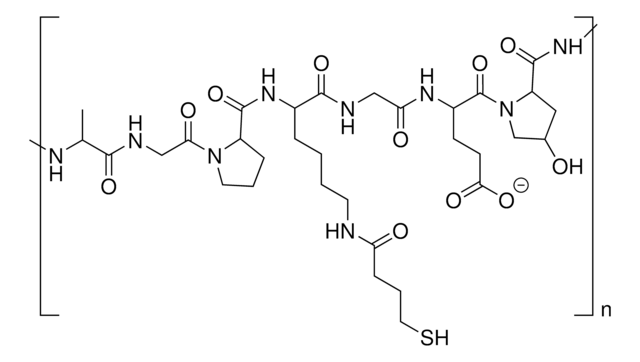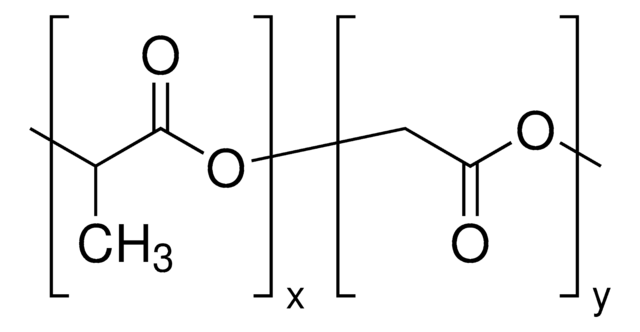925462
Maleimide poly(ethylene glycol)-block-poly(lactide-co-glycolide)
PEG average Mn 5,000, PLGA average Mn 15,000, lactide:glycolide 50:50
Synonym(s):
Maleimide-PEG-b-PLGA, Maleimide-PEG-PLGA
About This Item
Recommended Products
feed ratio
50:50±5 (Lactide:Glycolide, by NMR)
lactide:glycolide 50:50
Quality Level
mol wt
PEG Mn 4000-6000 g/mol (by NMR)
PEG average Mn 5,000
PLGA Mn 12000-18000 g/mol
PLGA average Mn 15,000
suitability
conforms to structure for NMR
storage temp.
−20°C
Looking for similar products? Visit Product Comparison Guide
Related Categories
Application
Storage Class Code
11 - Combustible Solids
WGK
WGK 3
Certificates of Analysis (COA)
Search for Certificates of Analysis (COA) by entering the products Lot/Batch Number. Lot and Batch Numbers can be found on a product’s label following the words ‘Lot’ or ‘Batch’.
Already Own This Product?
Find documentation for the products that you have recently purchased in the Document Library.
Our team of scientists has experience in all areas of research including Life Science, Material Science, Chemical Synthesis, Chromatography, Analytical and many others.
Contact Technical Service







